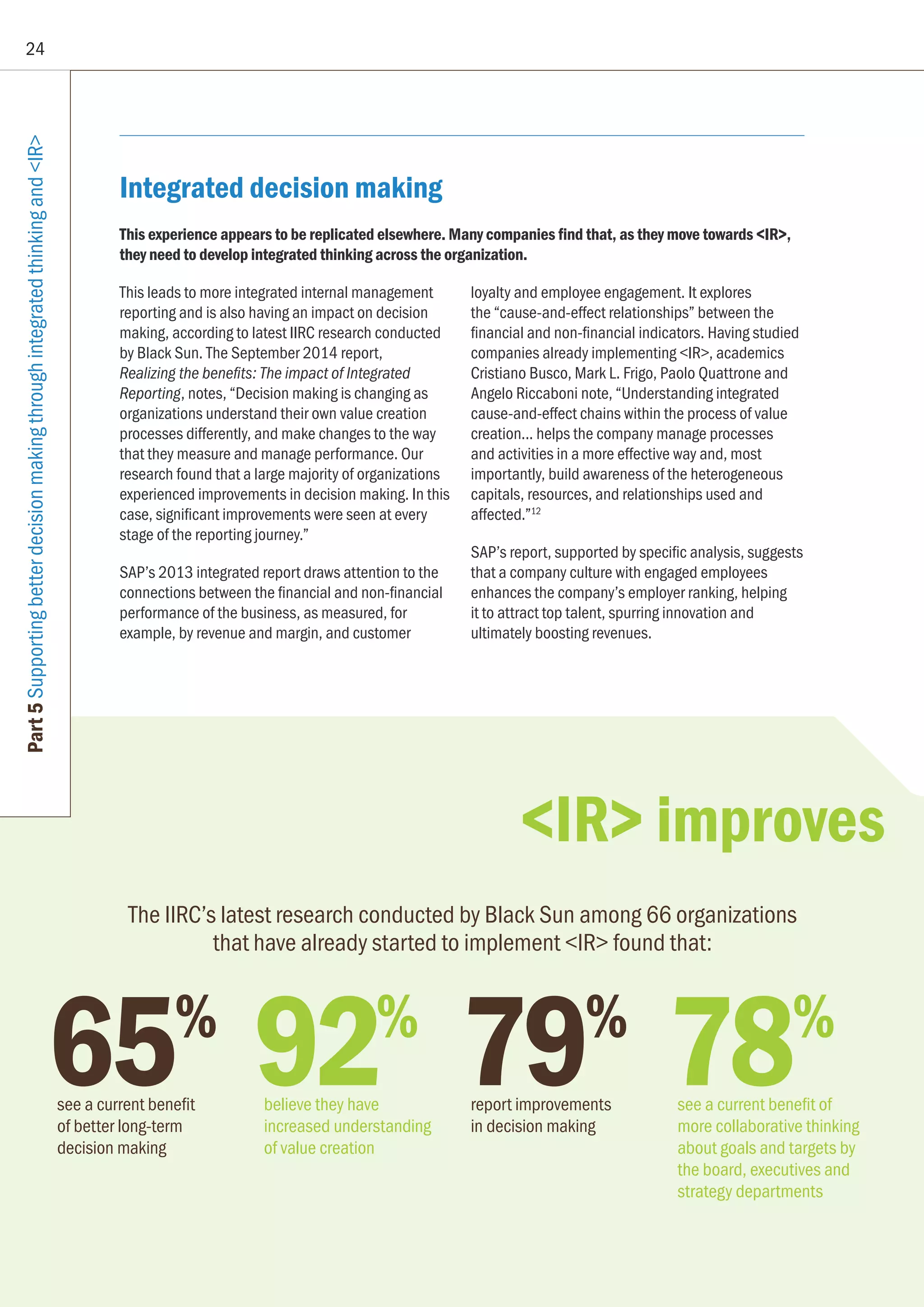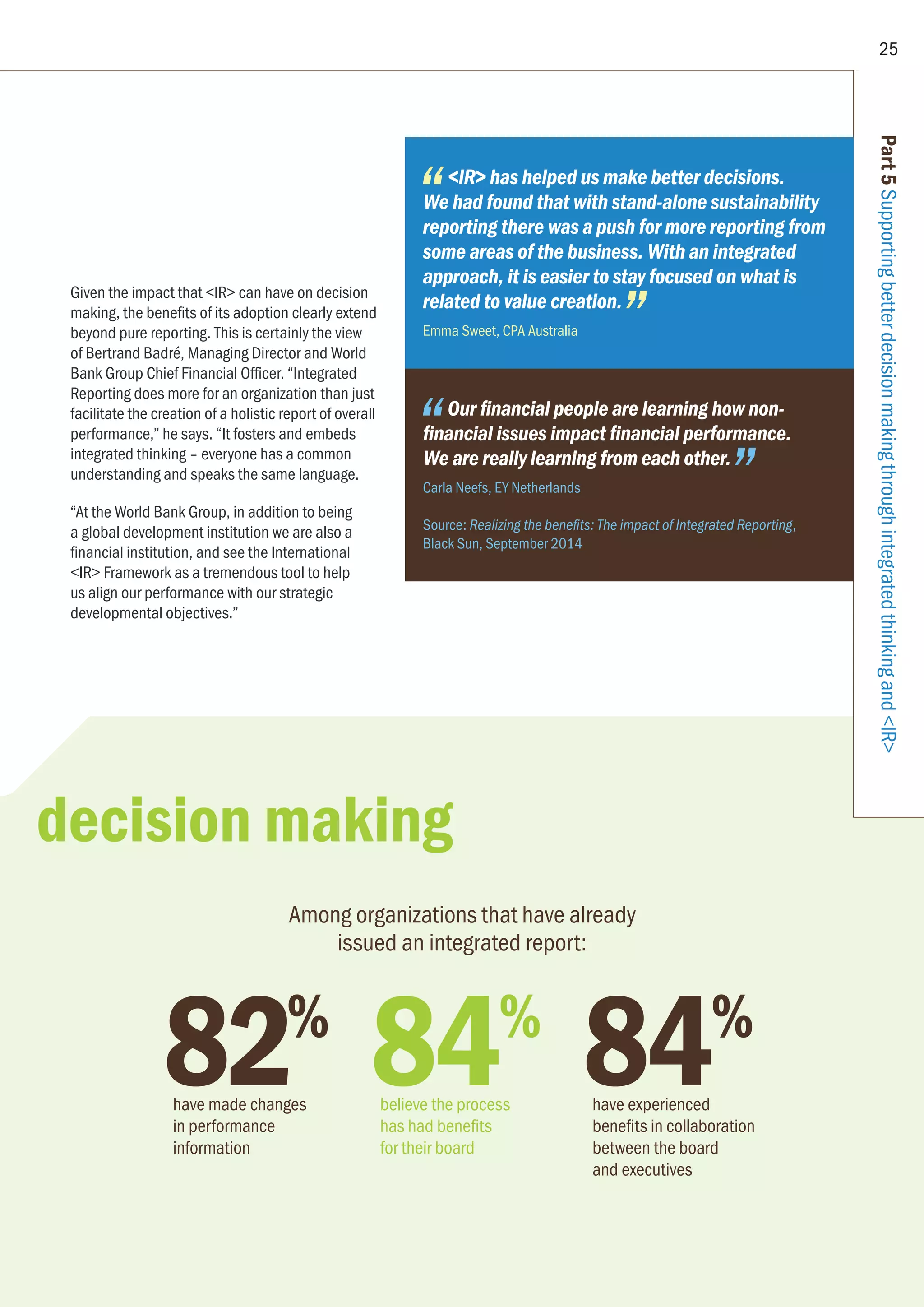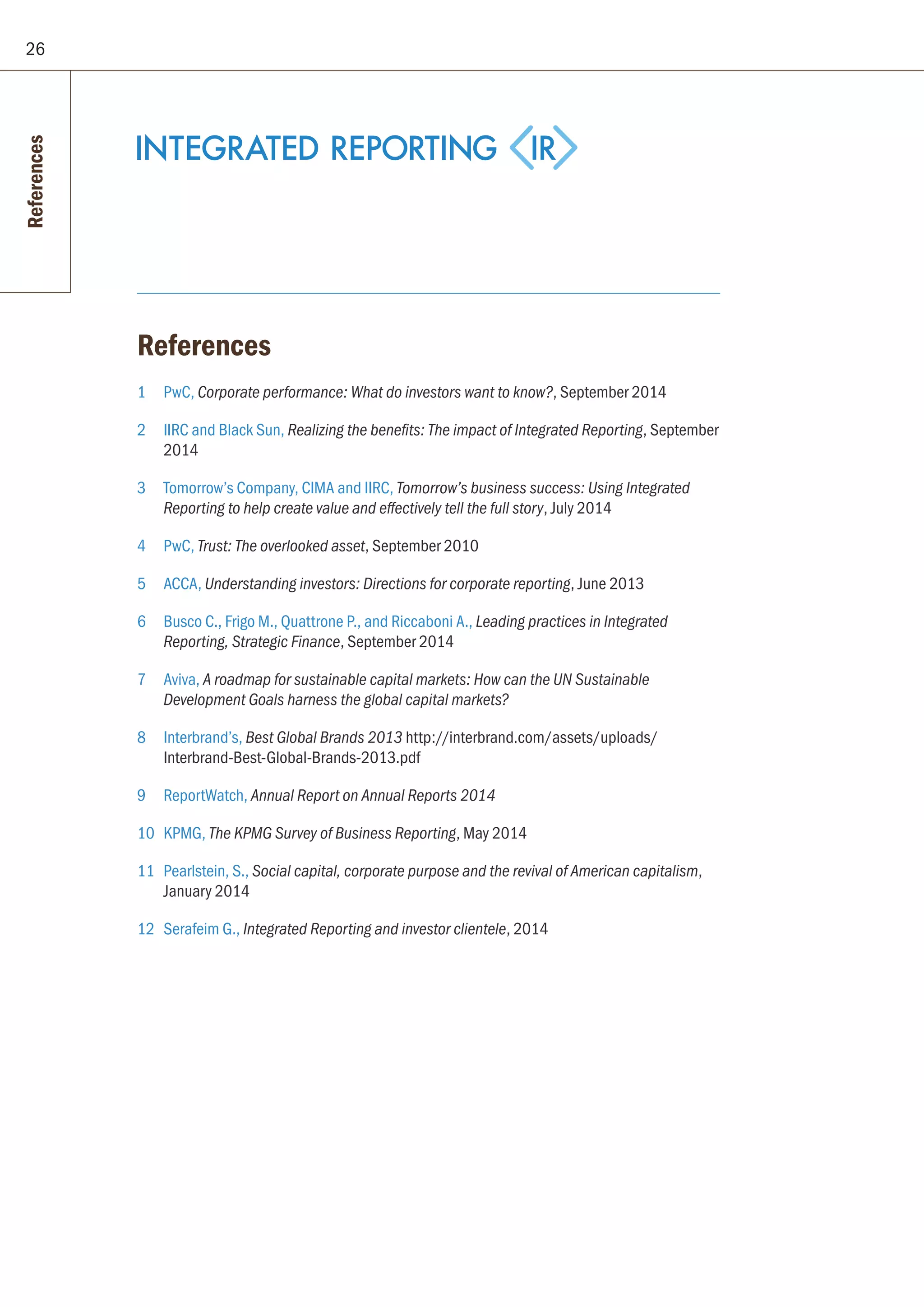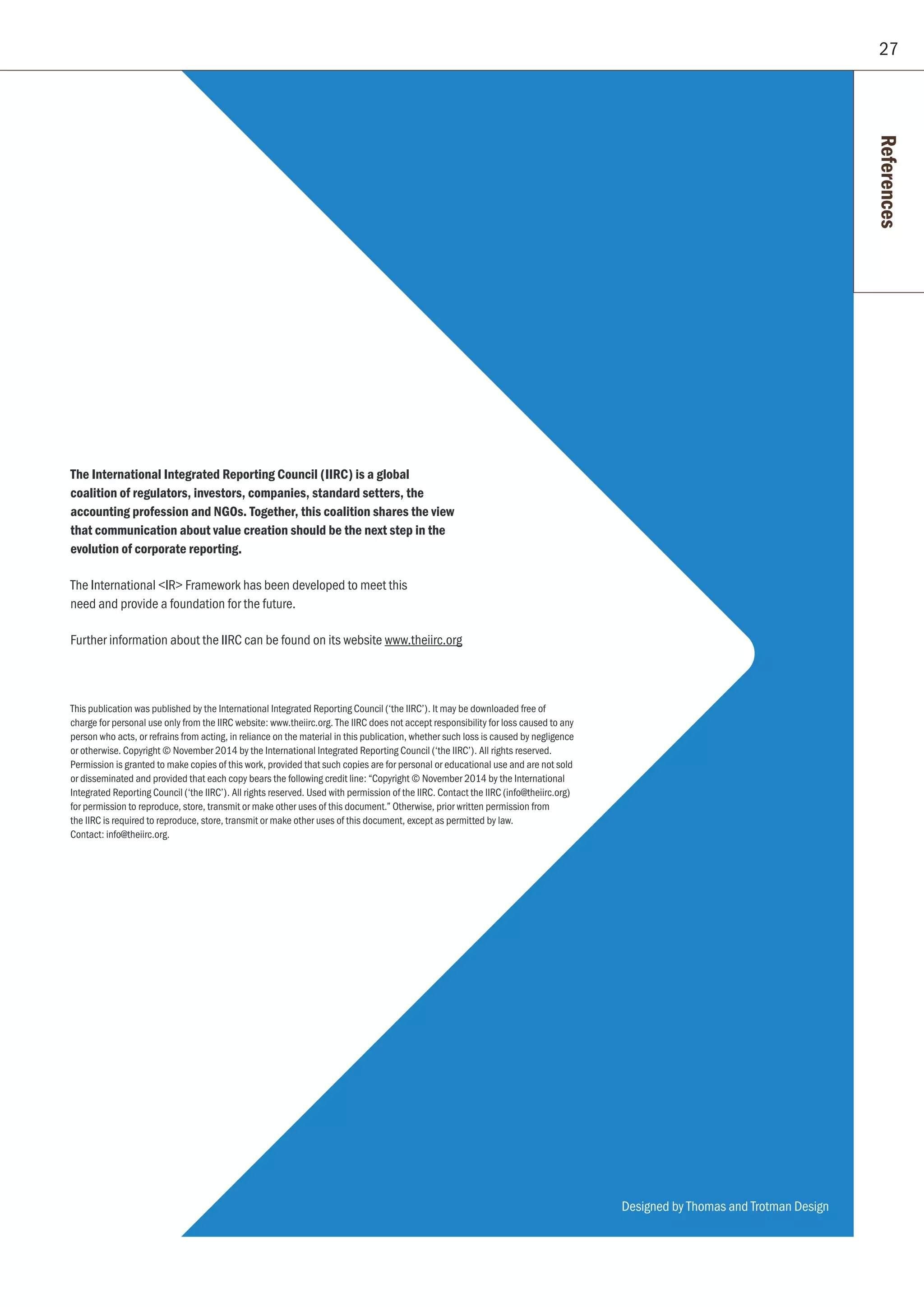The document emphasizes the importance of integrated reporting (<ir>) for corporate boards to build trust, articulate business strategies, and enhance decision-making in the context of long-term value creation. It highlights the challenges faced by businesses in restoring public trust following the global financial crisis and the need for transparency in reporting to stakeholders. Integrated reporting is positioned as a strategic tool to address these challenges and communicate a company's value creation efforts effectively.
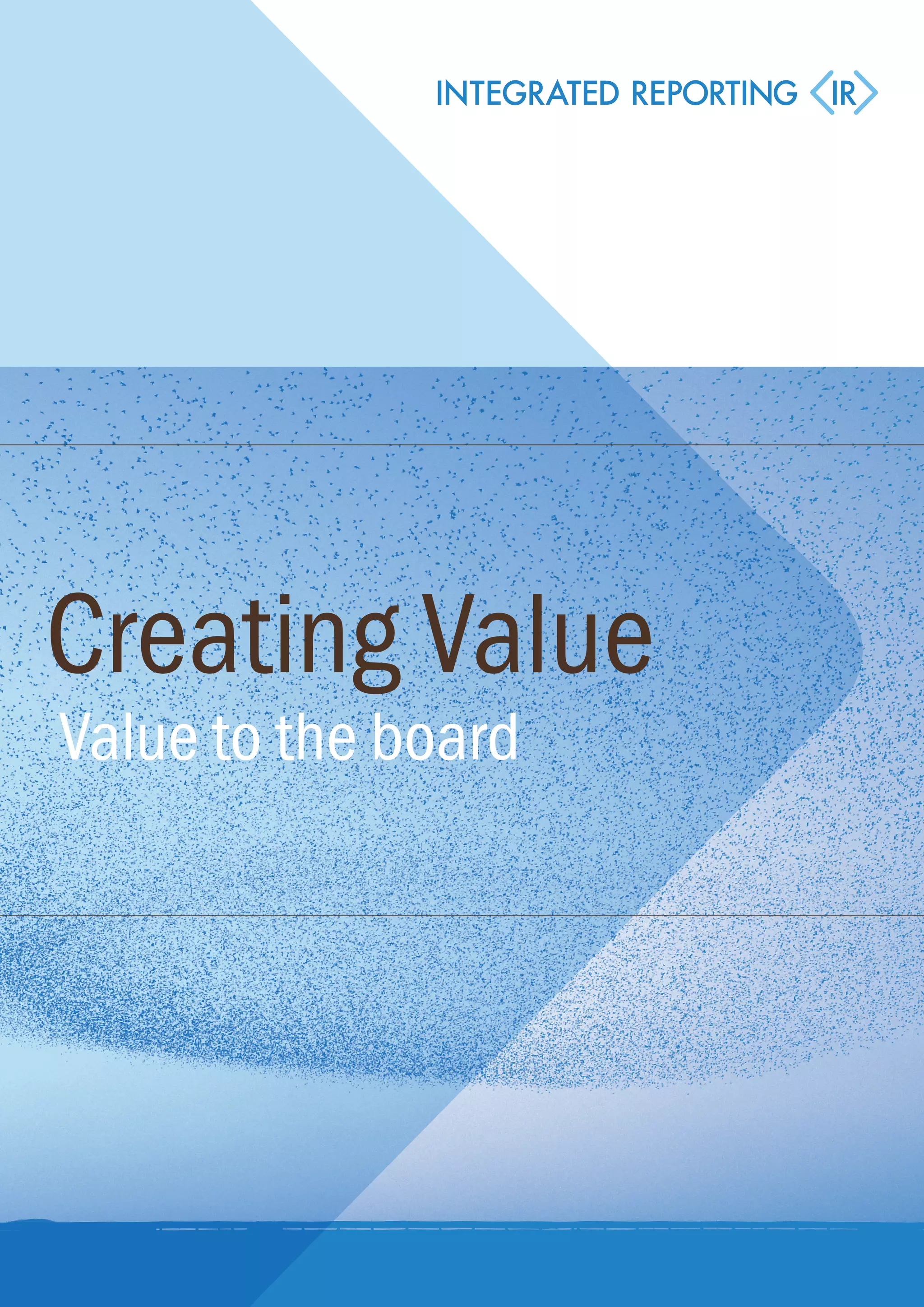
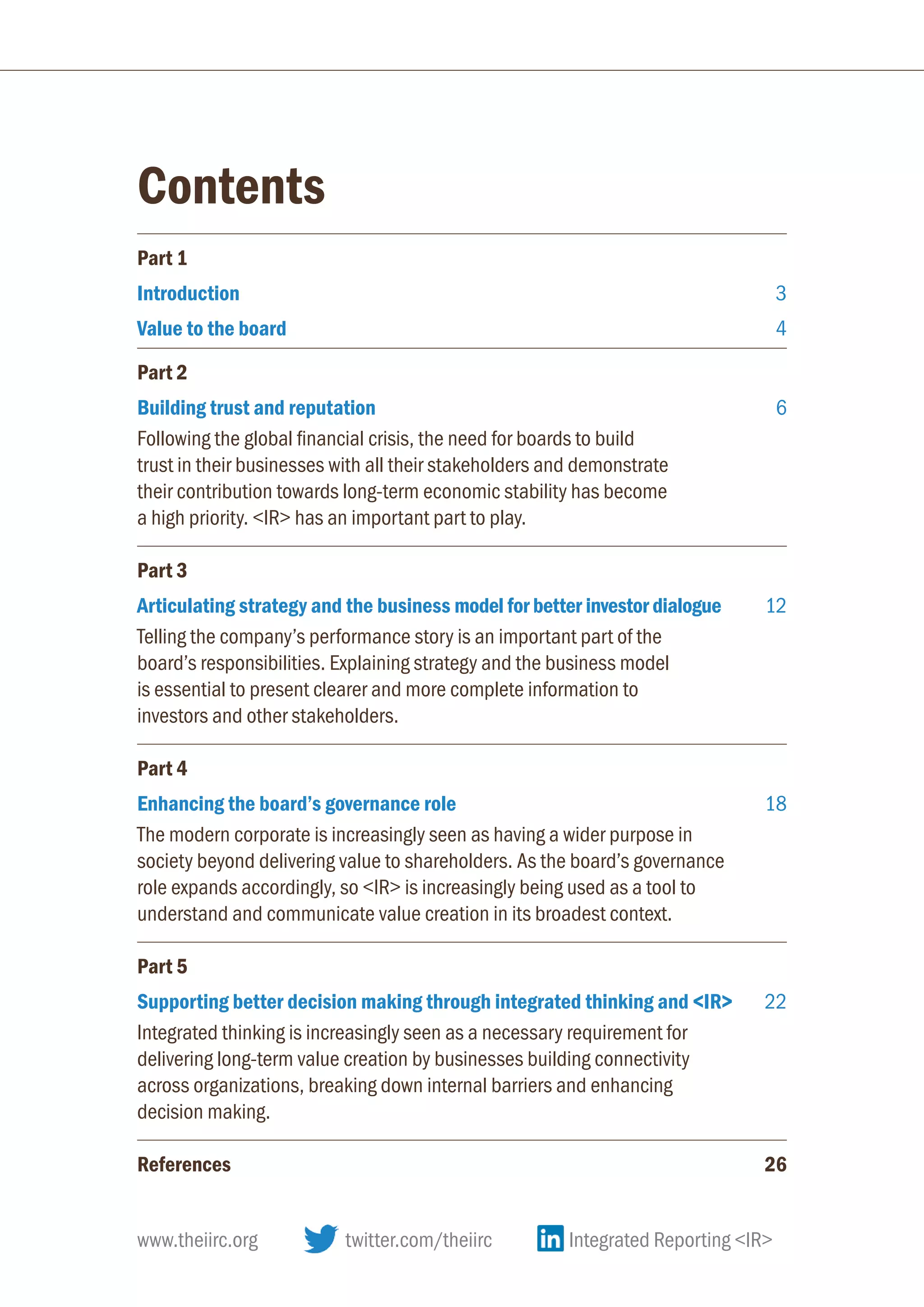
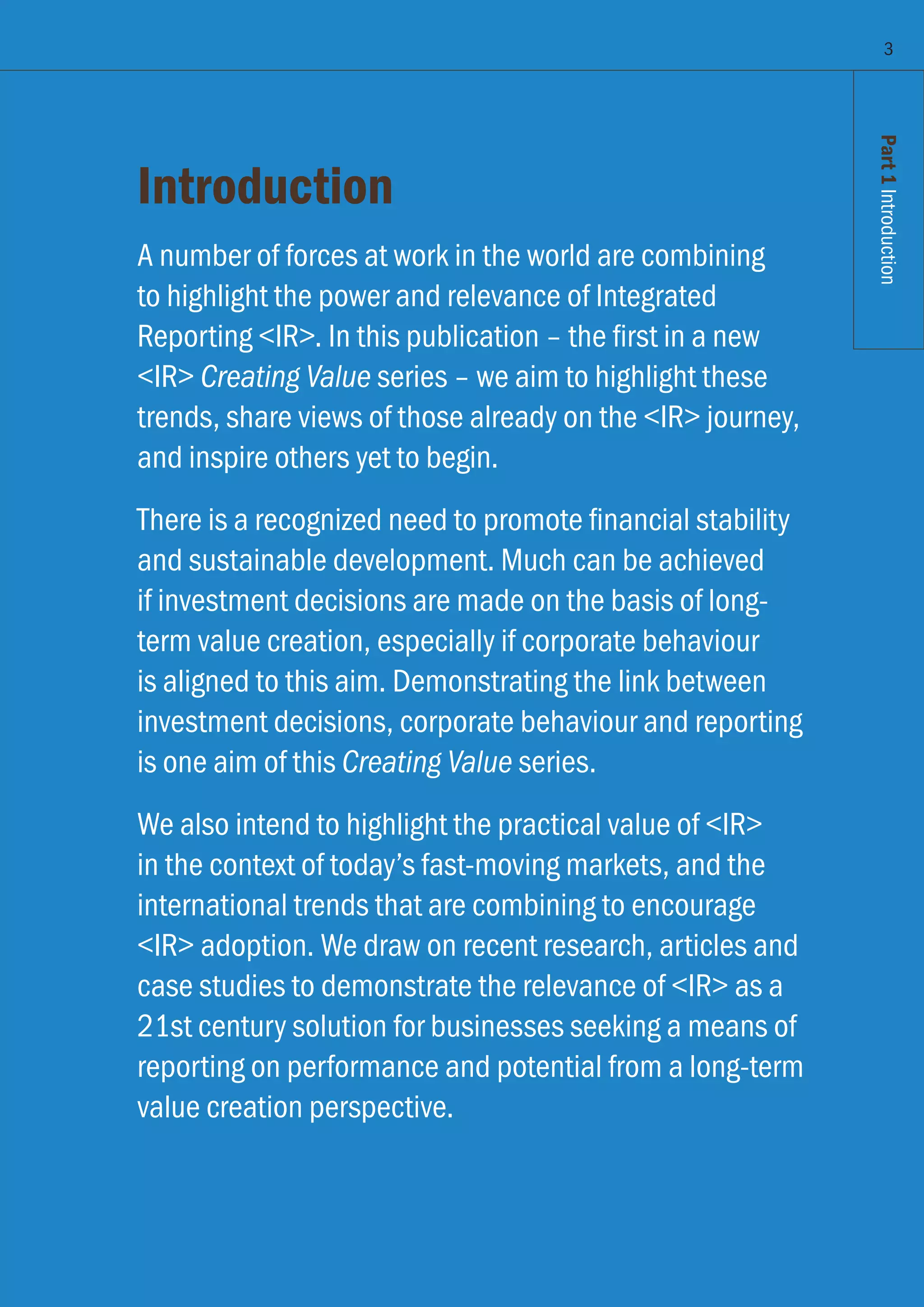
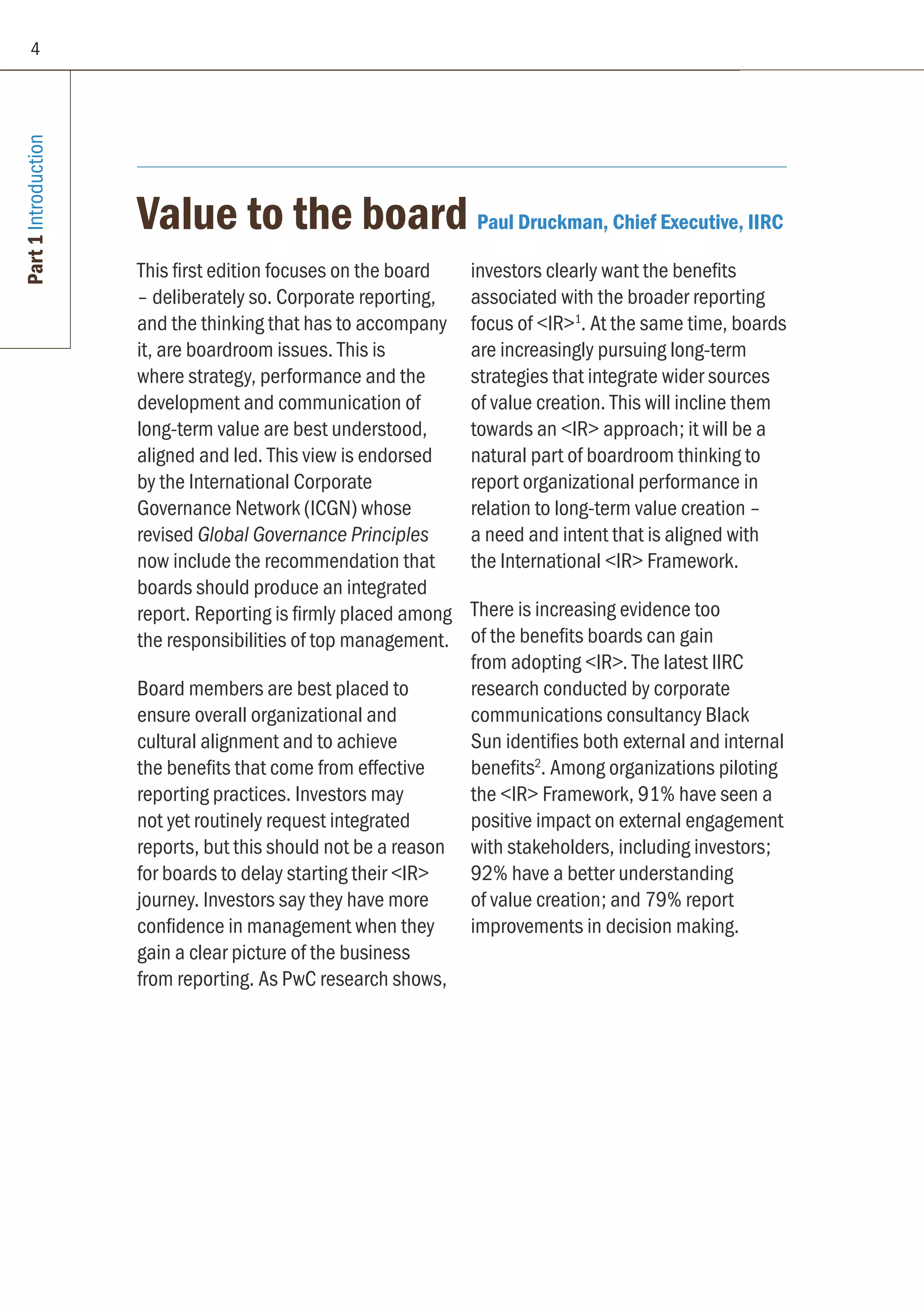
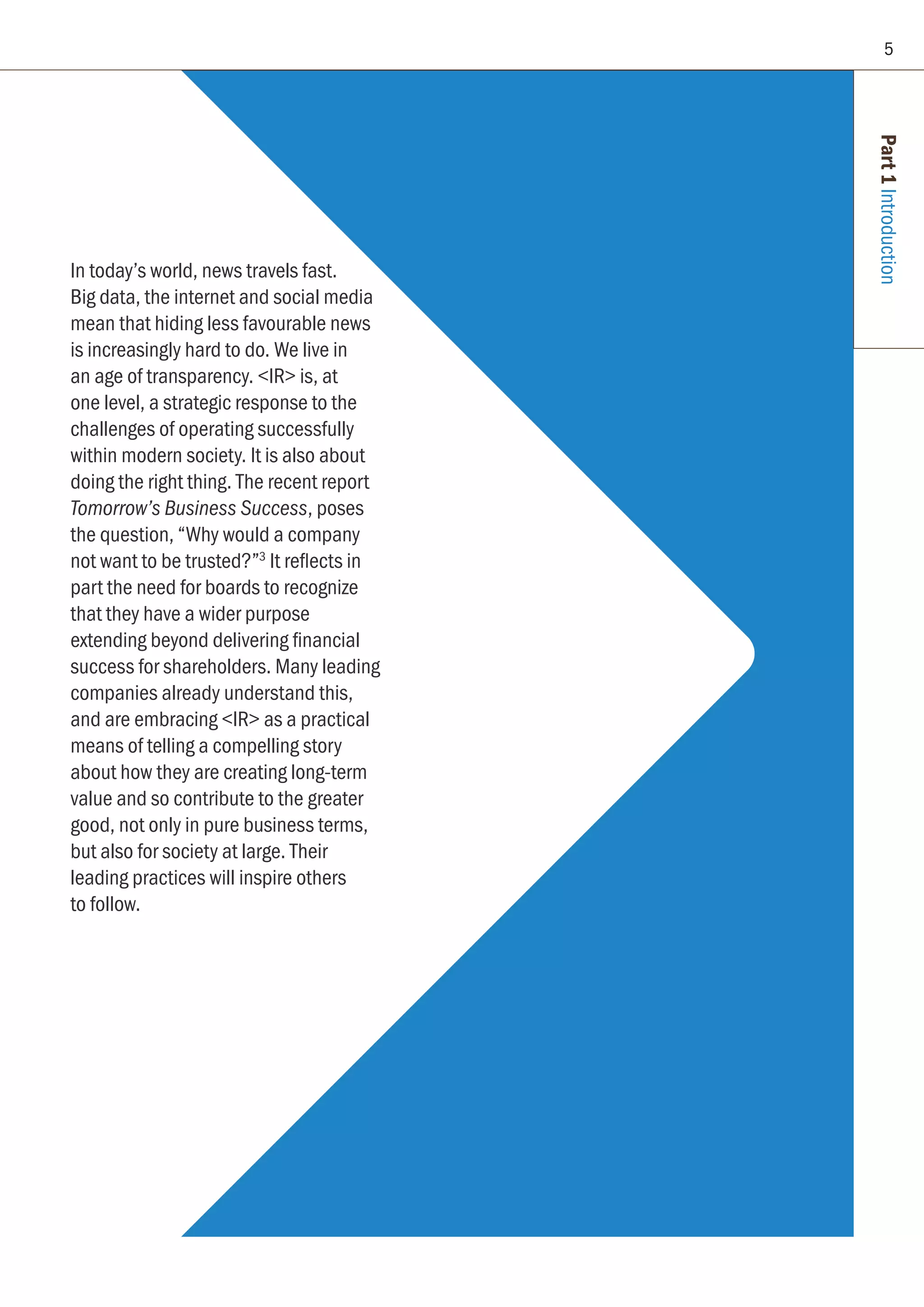
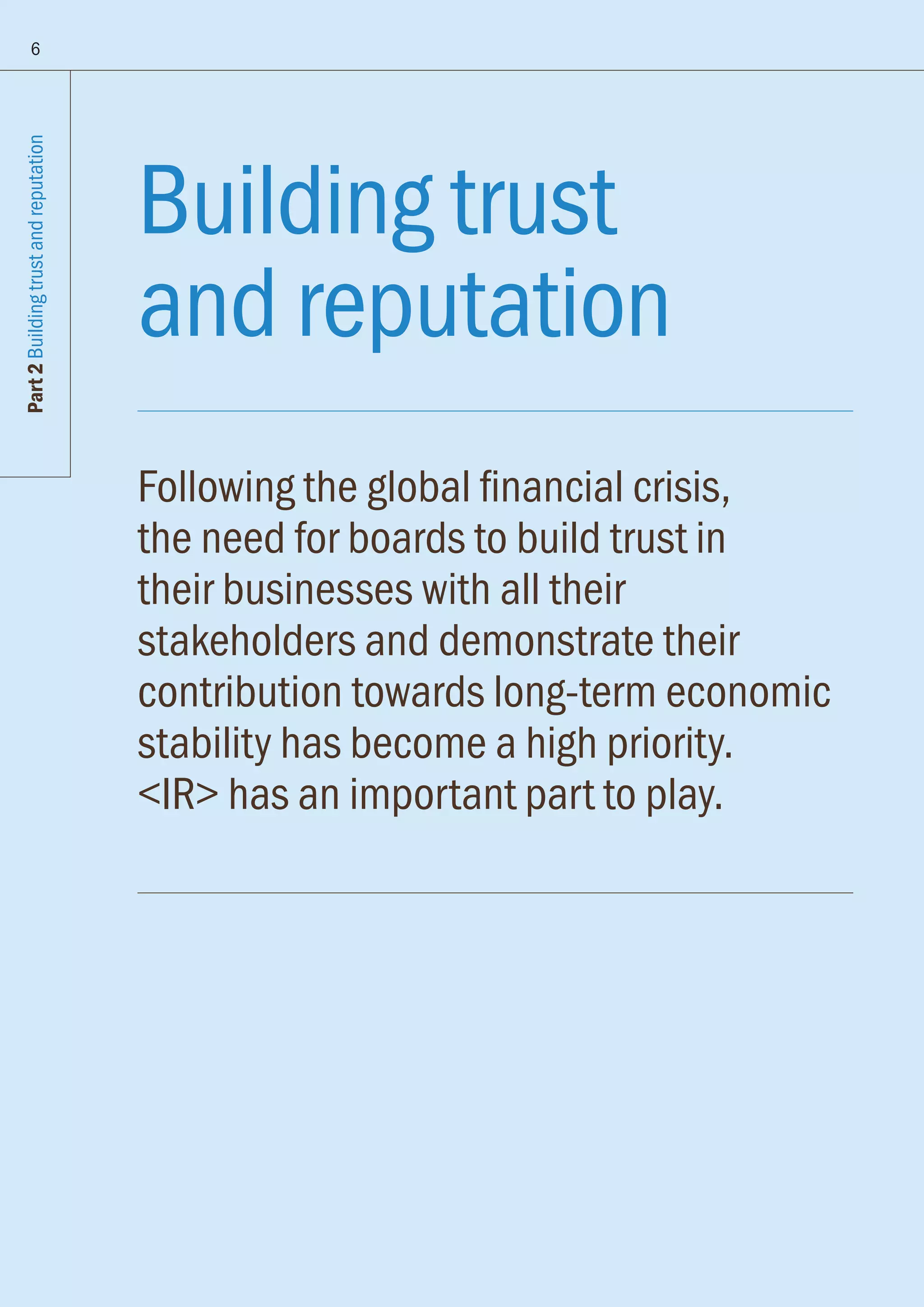


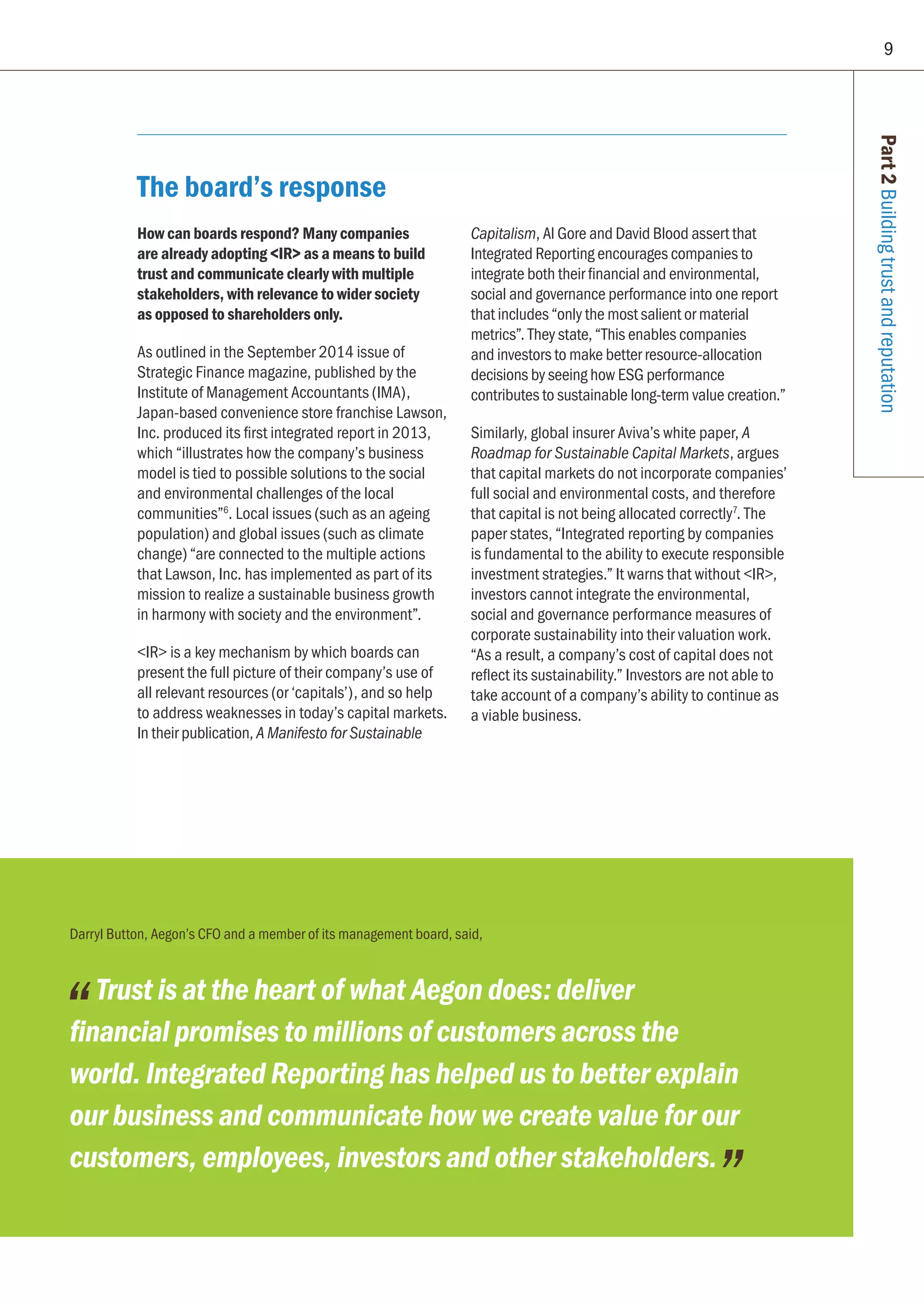
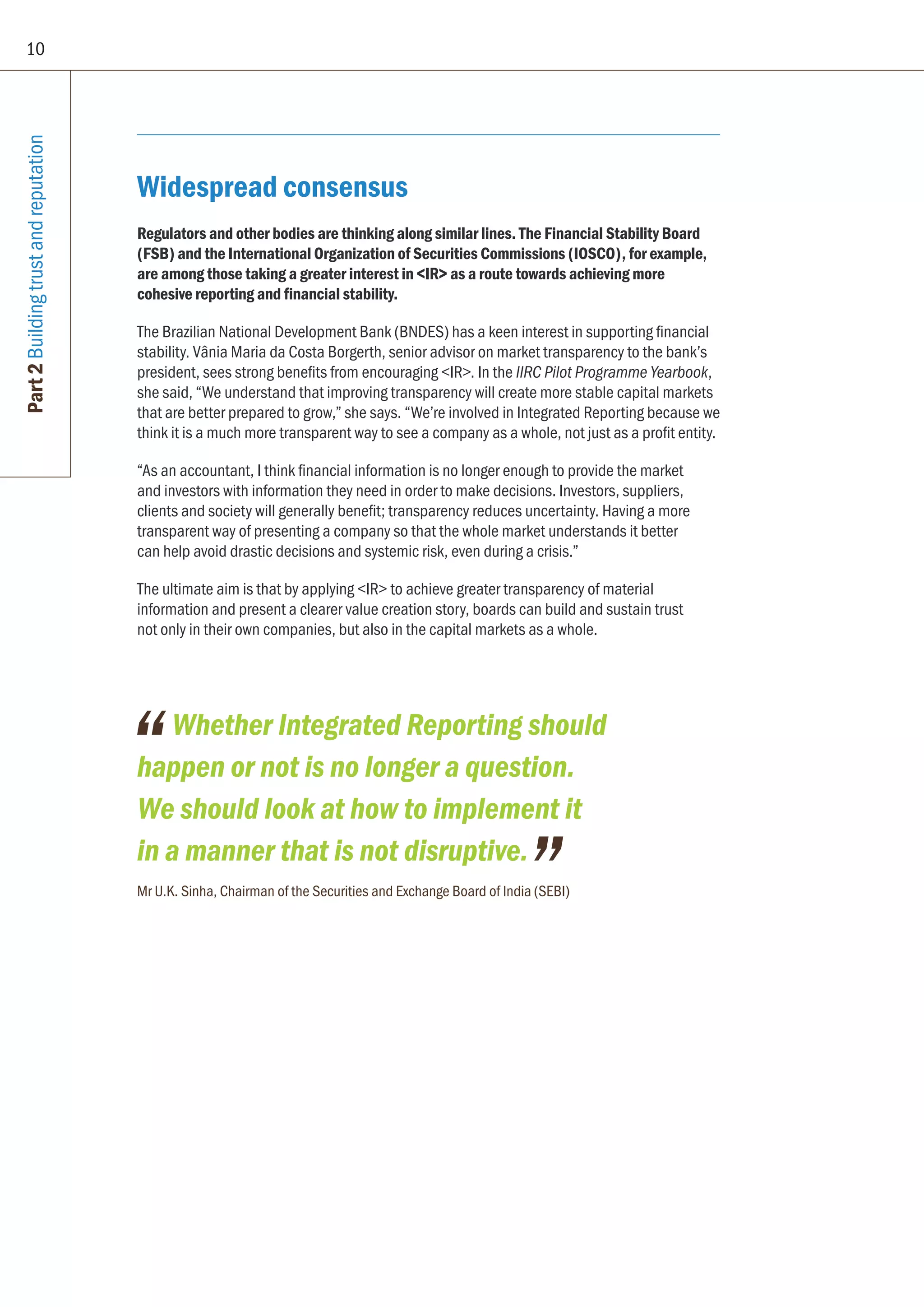
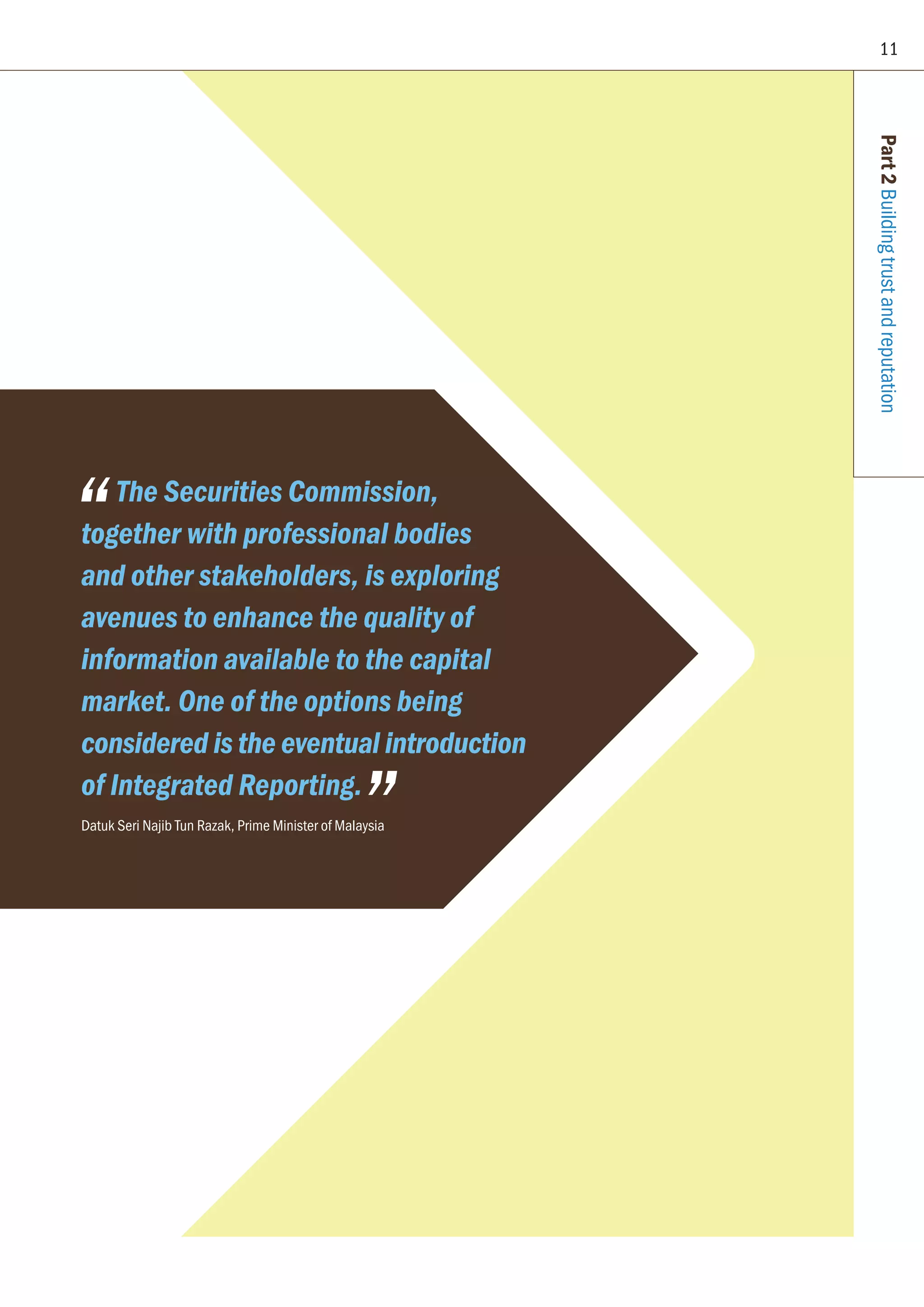

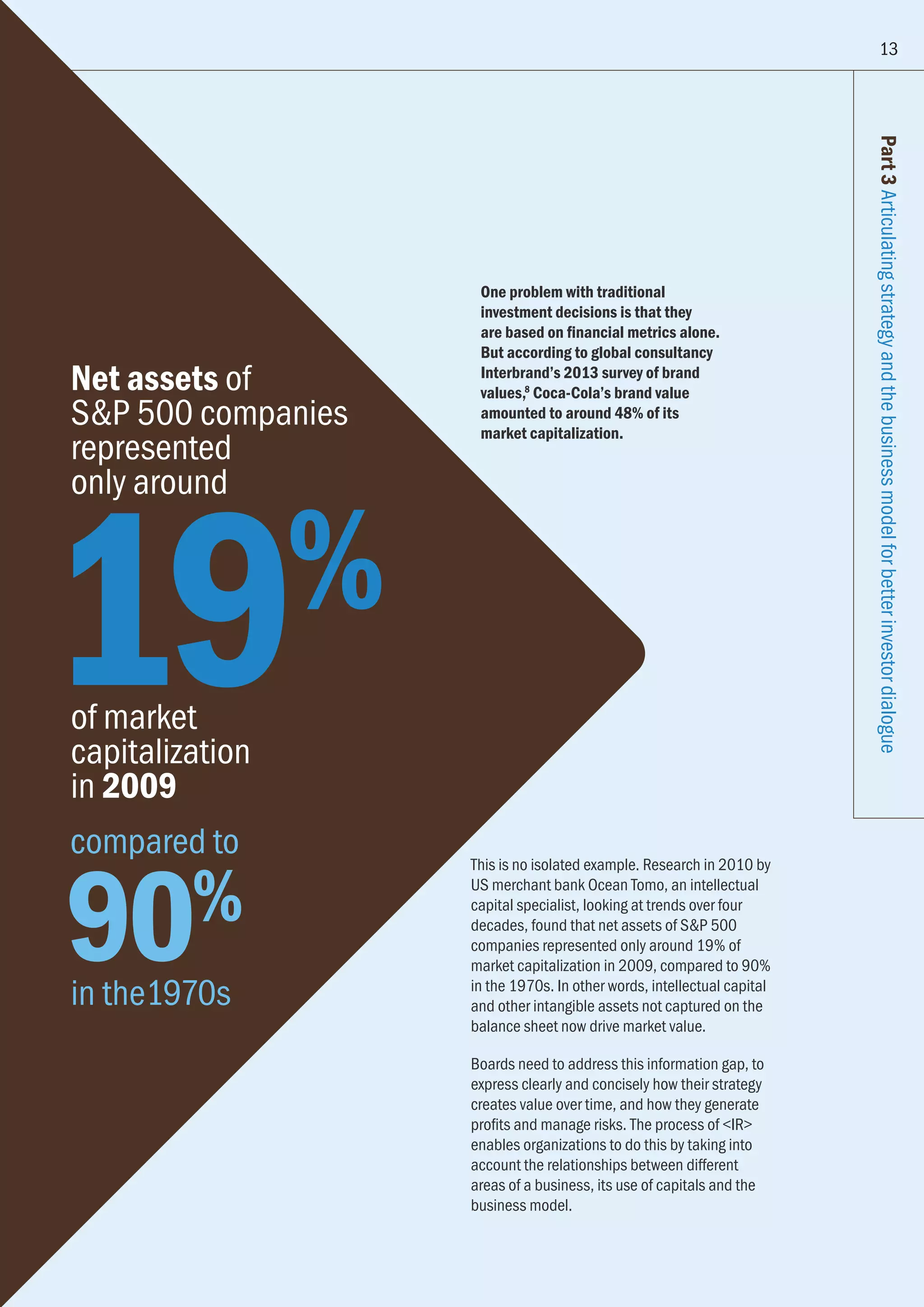
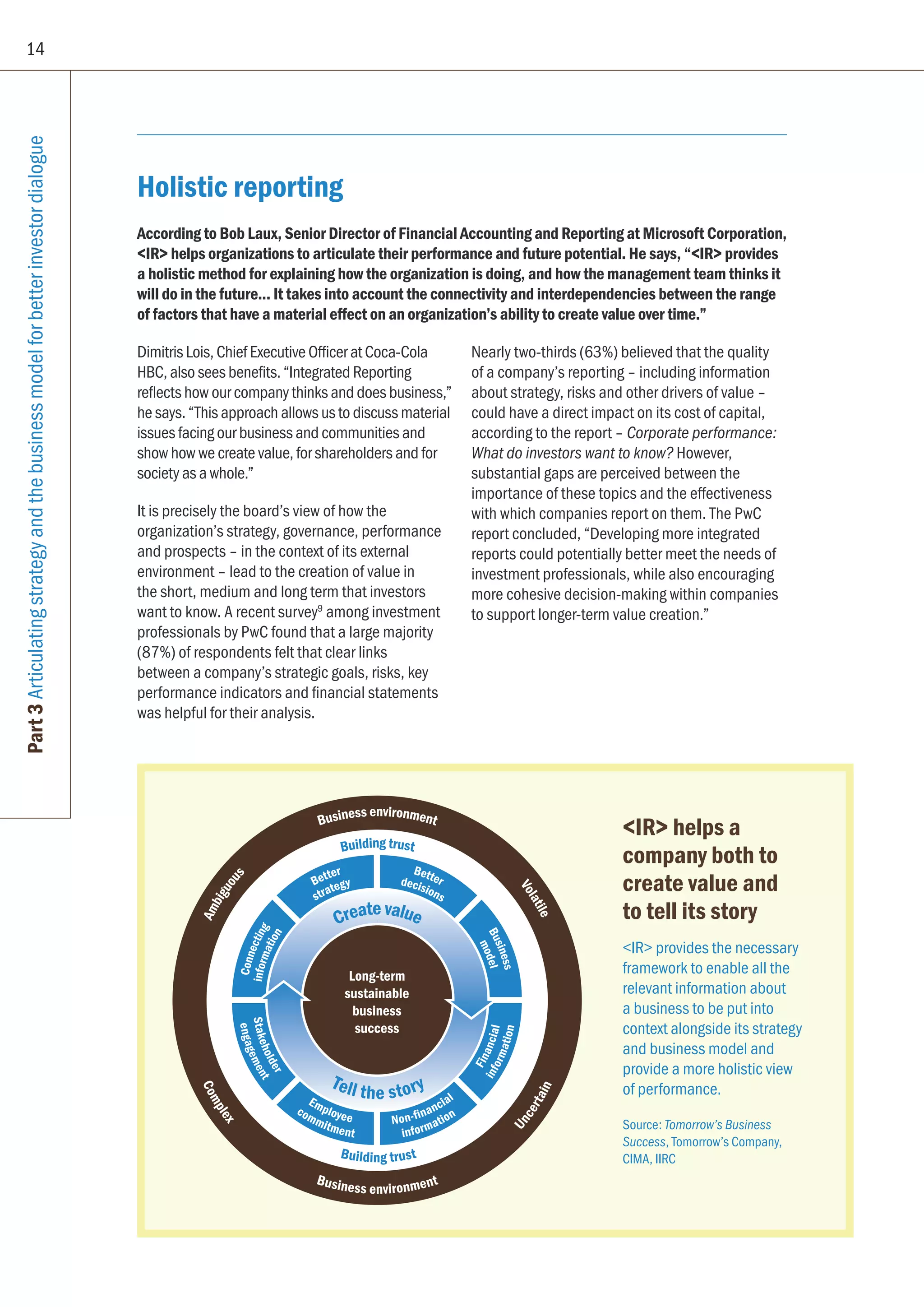
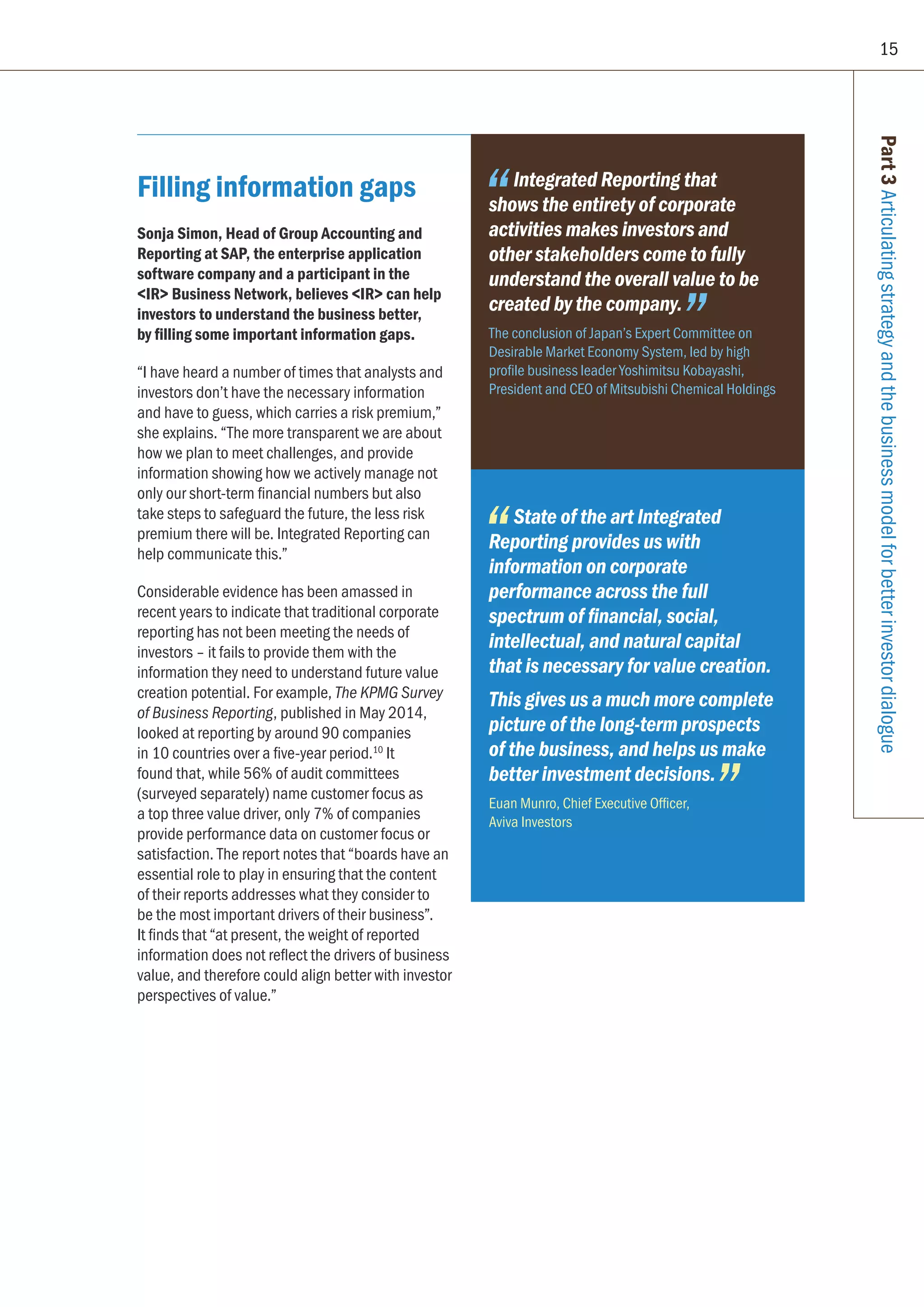
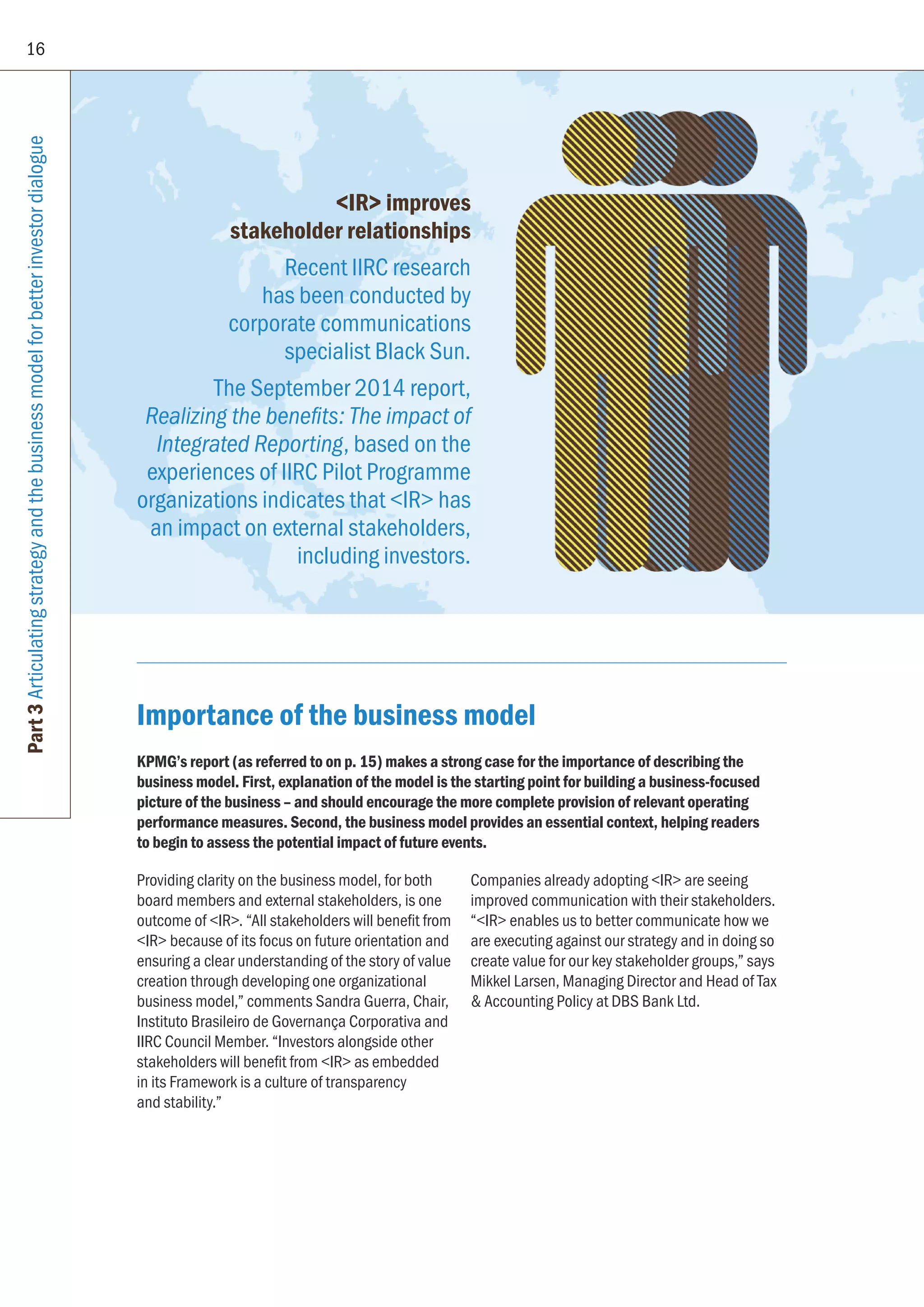
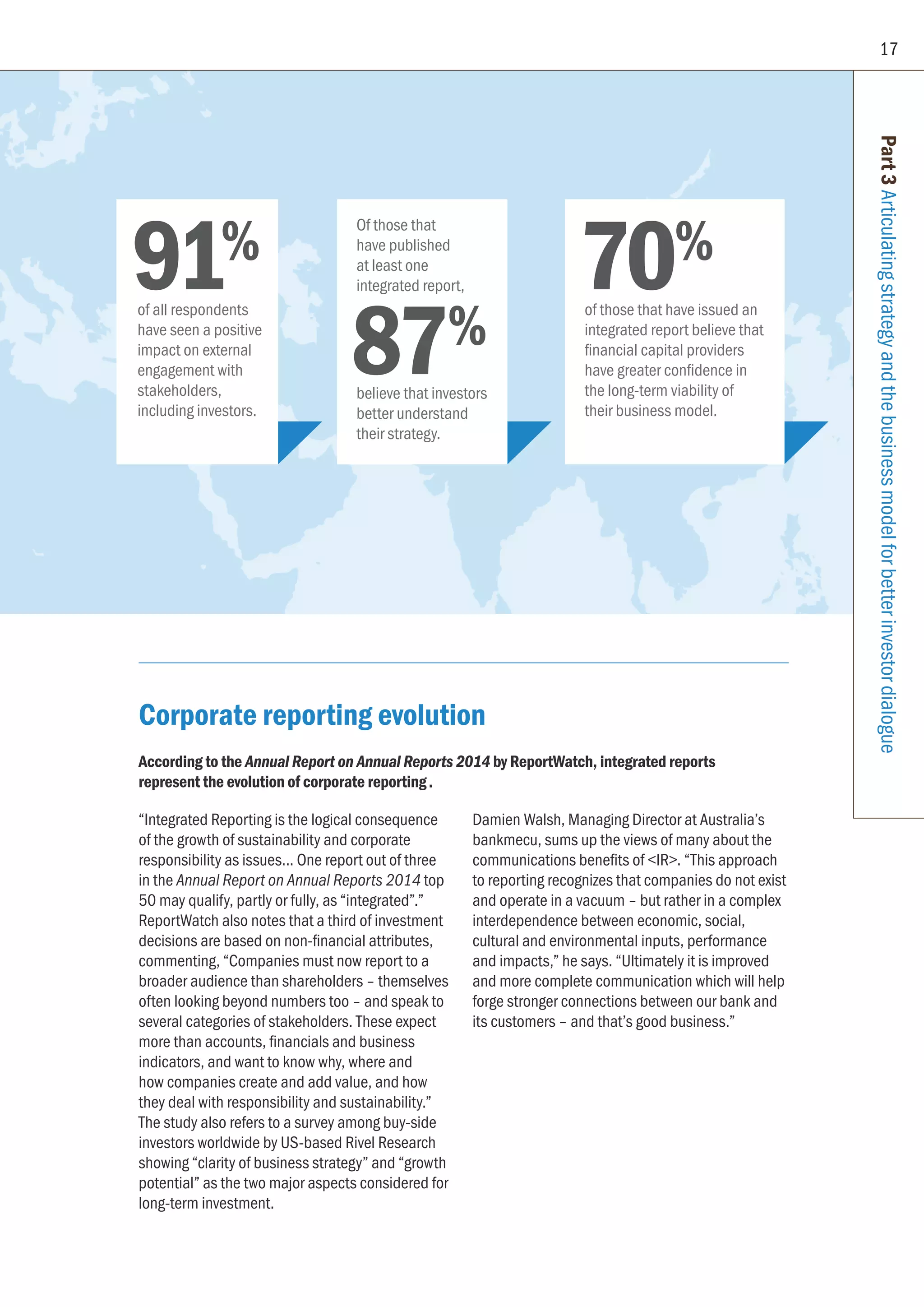
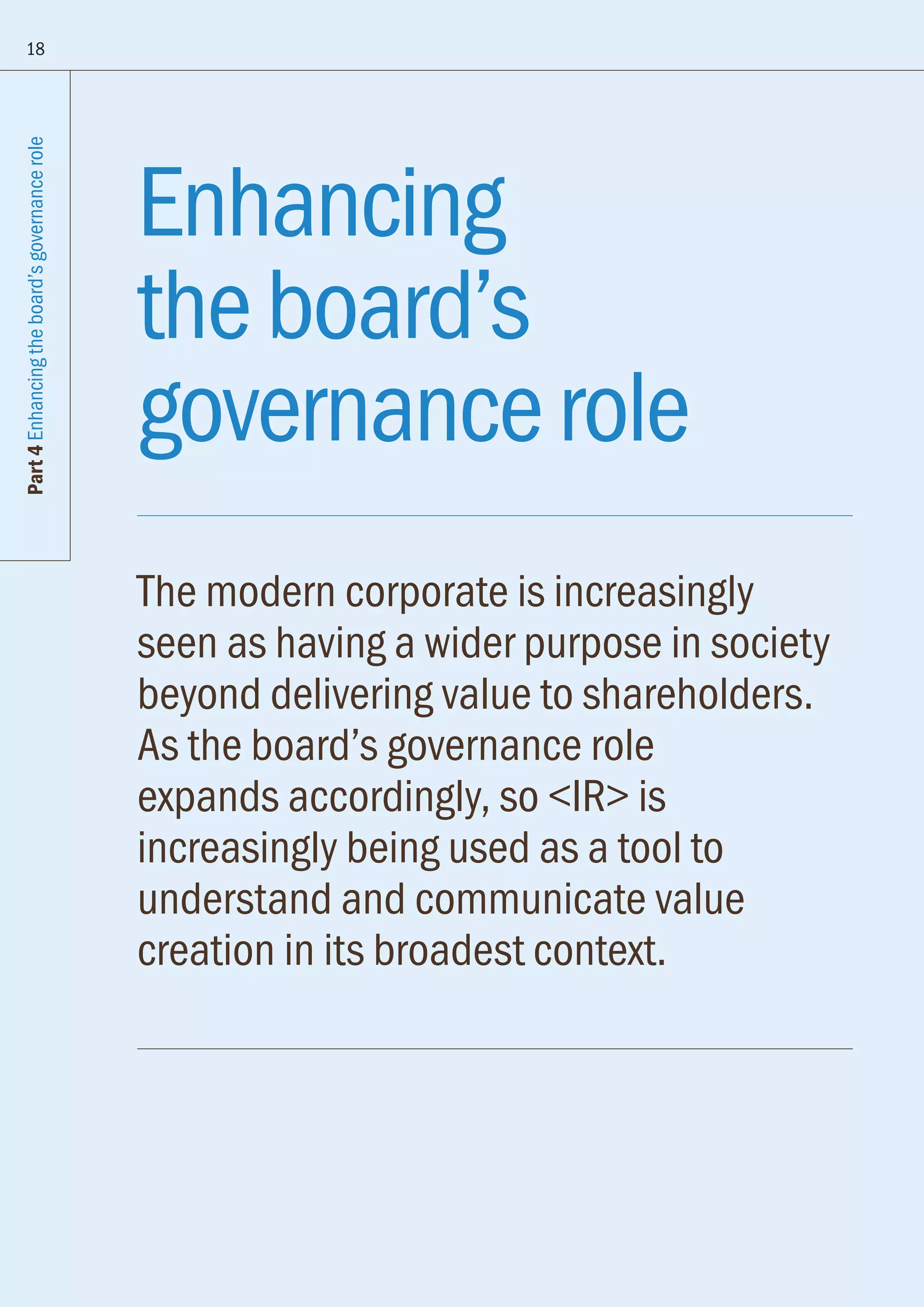
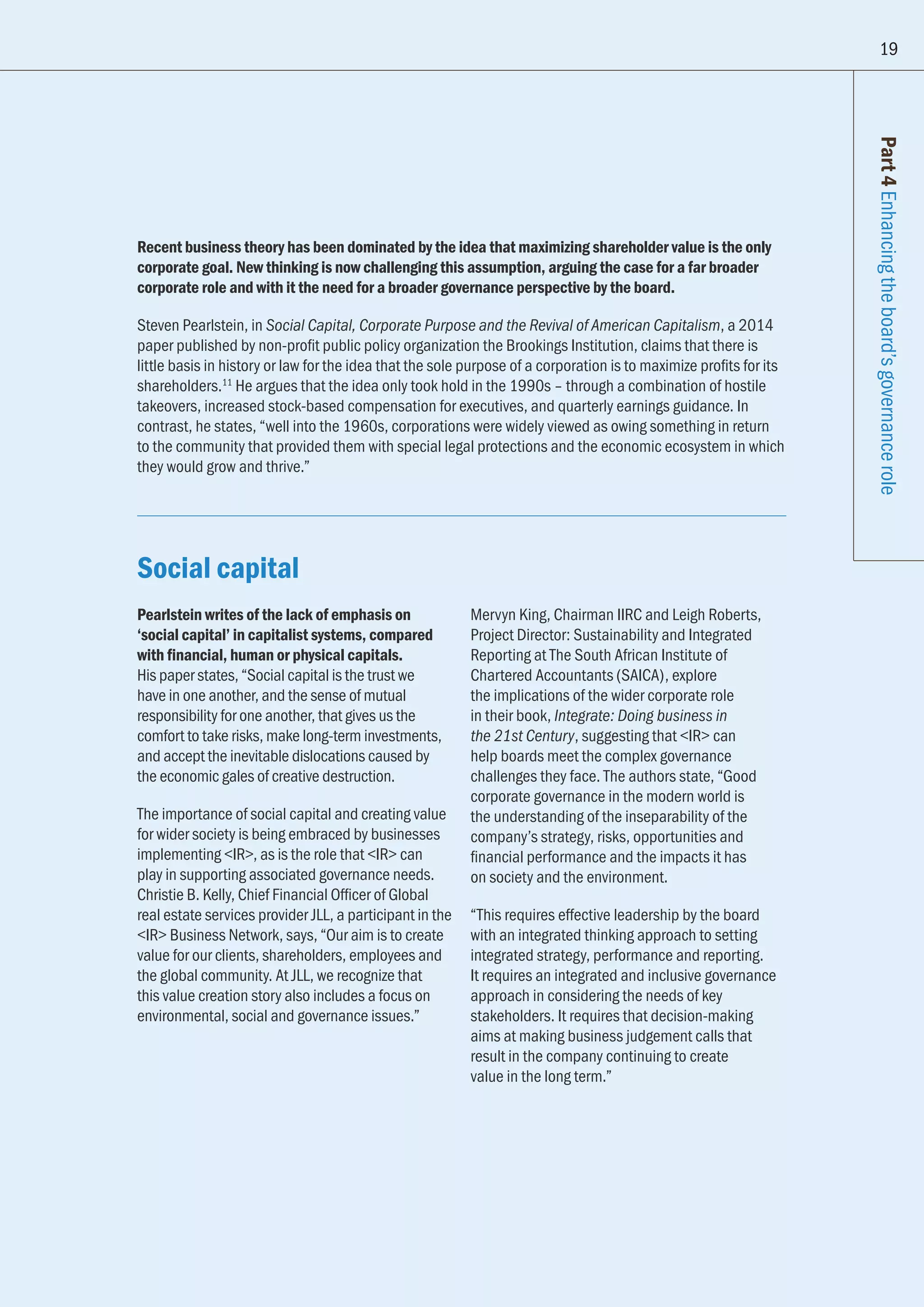
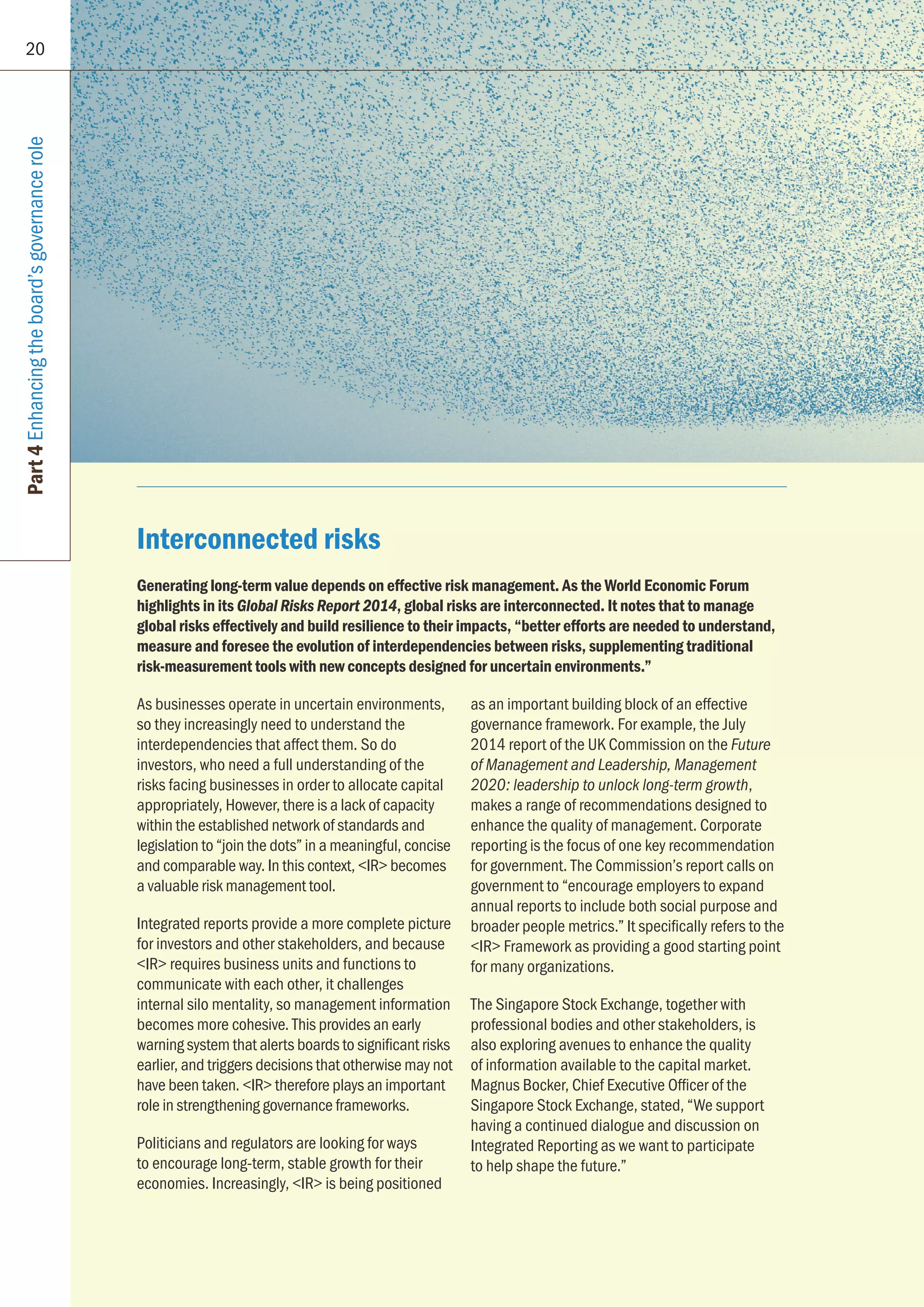

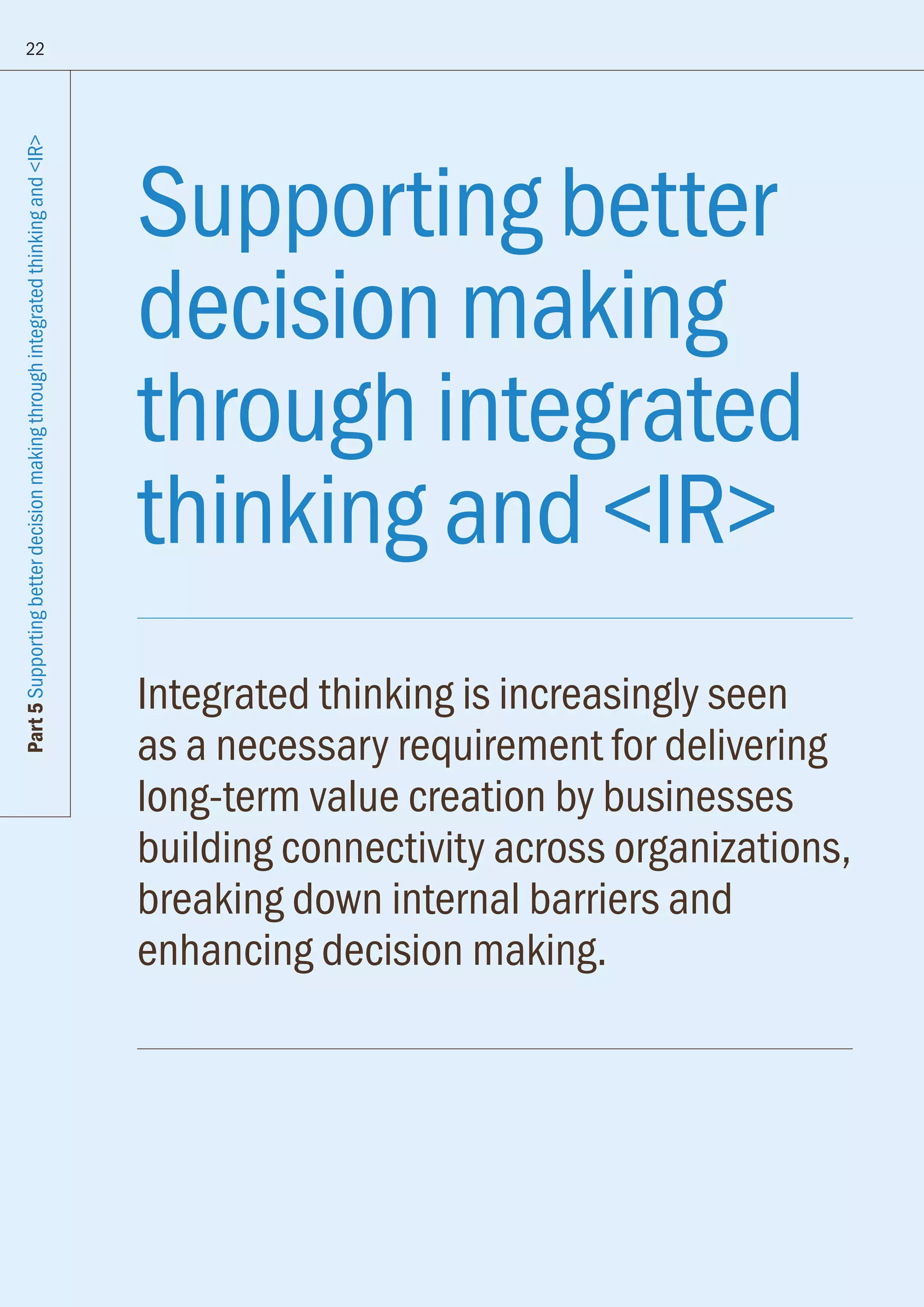
![23
The challenges facing company boards in
terms of building trust, communicating
strategy to shareholders and fulfilling their
broadened governance role are significant.
As companies grapple with these challenges,
the need for integrated thinking is increasingly
being identified.
In their book, Integrate: Doing business in the 21st
Century, Mervyn King and Leigh Roberts consider
the concept of integrated thinking. They explain
that integrated thinking by the board involves
“understanding the company’s dependency on its
various resources and relationships, along with the
associated risks and opportunities”. They state, “In
the board’s ongoing decision-making, integrated
thinking means it will assess whether a considered
action adds worth to the company, its effect on
key stakeholders and company reputation, and its
impact on the future availability and affordability
of the resources the company relies on.”
Integrated thinking can be contrasted with
“silo thinking” in that it takes into account the
connectivity and interdependencies between
the range of factors that affect an organization’s
ability to create value over time. The more that
integrated thinking is embedded into a company’s
activities, the more naturally will the connectivity
of information flow into management reporting,
analysis and decision making.
KPMG has studied the experience of applying IR
in South Africa, including the need to develop
integrated thinking. “Applying Integrated Reporting
principles to identify and assess a consensus view
of the material issues required “integrated thinking”
through involvement of all relevant disciplines in the
business,” comments Mark Hoffman, Integrated
Reporting, KPMG in South Africa.
Part5SupportingbetterdecisionmakingthroughintegratedthinkingandIR
The biggest benefits of integrated
reporting will not come from
being compliant or from attracting
investors. They will come from the
discipline of needing to think, plan,
and manage in a more integrated
way. This will help companies achieve
the agility and flexibility they need
to respond to change – and seize
opportunities – in an increasingly
transient world.
Paul Barnett, founder and CEO of the Strategic
Management Forum, writing in Corporate Finance
Review, July/August 2014
[Companies are] driving IR
because of the business performance
improvements that adopting it
brings. One of the most mentioned
benefits of IR is the opportunity
it provides to connect teams from
across an organization, breaking
down silos and leading to more
integrated thinking.
Oversight of corporate reporting by company
directors, KPMG Australia, July 2014](https://image.slidesharecdn.com/iircintegratedreportingcreatingvalue4a-150317203615-conversion-gate01/75/IR-Integrated-Reporting-Creating-Value-Value-to-the-Board-IIRC-23-2048.jpg)
